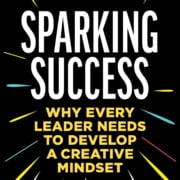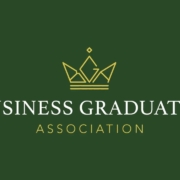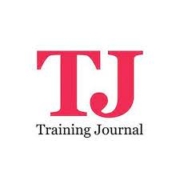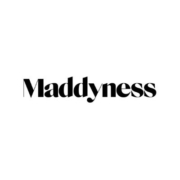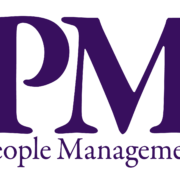Humanising leadership through the arts: part 2
A NEW YEAR, A CREATIVE YOU: HOW TO COMBINE ARTISTIC AND HUMANISTIC MINDSETS FOR BUSINESS SUCCESS In keeping with our annual tradition, we begin the New Year with a book review on creativity! Here are some key insights and tips. Happy New Year! Madanmohan Rao
Read more at: https://yourstory.com/2023/12/creativity-leadership-art-success-book-adam-kingl
Thriving in the face of fast-moving trends and disruptions in the modern business landscape requires leaders to cultivate a more creative and humanistic mindset, according to the book Sparking Success: Why Every Leader Needs to Develop a Creative Mindset by Adam Kingl. The author profiles innovative approaches at organisations like Pixar, Disney, Unilever, 3M, Bosch, Panasonic, and Carnegie Hall. Each chapter ends with a useful ‘Monday morning’ checklist of actions that can be implemented by readers. Adam Kingl is Adjunct Faculty at the UCL School of Management, and was earlier an associate at Saatchi & Saatchi. He holds business and arts degrees from London Business School, UCLA and Yale. Kingl was raised in Silicon Valley and now lives in Surrey, UK.
Read more at: https://yourstory.com/2023/12/creativity-leadership-art-success-book-adam-kingl
“In these times where the lines between industries are blurring, cognitive diversity in innovation is more important than ever,” he urges. He calls for more cross-industry learning and cross-skills collaboration. Here are my key takeaways from this enjoyable and practical 225-page book.
Foundations
Times of technological change and business flux call for leadership approaches that are creative, humanistic, fluid, and agile. Inputs from the artistic sector are needed to help industrial age leaders better manage teams, ideate, innovate, improvise, adapt, and organise. The author draws inspiration from the Renaissance period, when commerce, science and the arts intermingled in a creative synergy. Unfortunately, much of this creativity and humanity seems lost in modern management. Five chapters provide management lessons drawn from the fields of jazz, writing, performing arts, entertainment, and even culinary arts. In these contexts, Kingl showcases a range of innovation types: strategy, product, process, technology, platform, and management.
Jazz
The improvisational, collaborative and spontaneous nature of jazz performances has a number of lessons for business. They include being comfortable with uncertainty, enhancing serendipity, exploring ideas, and making partners look good. Structure and practice are important, but so are working with constraints and being resilient. Kingl explains that truly creative leaders don’t always have the answers but are authentic, vulnerable and imaginative, and facilitate emergence of solutions from their team.
Writing
The world of writing shows the importance of humility required to encourage and reject many ideas before landing on the right one, Kingl explains. Feedback, a bigger picture, and a change of environment can help get unstuck. Techniques like discussing films while walking were used by the scriptwriters of Star Wars: The Force Awakens. The writers of Friends would pivot from the original script depending on audience attachment. Alternative perspectives from roles like optimist and devil’s advocate can help refine a plot. Breaking up into smaller groups or harnessing the pressure of a deadline can also speed up clarity. The author cautions that moving too quickly on ideas without seeking broad inputs can be damaging. Introverts and junior colleagues tend to defer to leaders who speak first.
The performing arts
Successful performers in theatre and music highlight the importance of the growth mindset. This involves willingness to learn, driving abilities through attitude, eagerness to experiment, and acceptance of failure as a source of learning. Business firms can bring in new perspectives via artist residency programmes. Storytelling can help create compelling and inspiring narratives, as shown in the creation of the National Youth Orchestra when the foundational idea was shared and socialised with donors. Making many smaller bets should go hand in hand with a few larger bets. Employees should be given room to be imaginative and entrepreneurial, and speak up when there are problems. Questions and conversations are more important than answers. “I have to behave like the founder of a startup,” says Clive Gillinson, executive and artistic director of the iconic Carnegie Hall in New York, who effectively combines creative and commercial leadership roles. Successful performers regularly take risks, pushing themselves as well as their audience. Reinventing and repositioning are key to long-term success. Examples here include saxophonist Sunny Rollins. Faith and conviction in the extra-ordinary are hallmarks of visionary leaders, as seen in the cases of Steve Jobs and Akio Morita. A passion and commitment to always connect to its audience helped Carnegie Hall pivot to online broadcasts and storytelling during the pandemic. “Successful leaders hold seemingly competitive dynamics in a creative tension: innovation and risk, freedom and constraint, prototype and fully-realised project, spontaneity and planning. The trick is not to choose one over the other,” Kingl observes.
Entertainment
One chapter addresses the ‘Imagineers’ of Disney, where engineering, design and customer experience are effectively blended. Human connection, artistic freewheeling, secure platforms, and rapid prototyping are the key enablers. Andrew McGuinness, Co-founder and CEO of multimedia entertainment company Elipsis, describes himself as an evangelist who motivates employees and inspires investors. “My challenge is simultaneously to be an architect, juggler, visionary, and accountant,” he explains. While motivation is important, Kingl cautions leaders against assuming that what motivates them also motivates their employees. They must regularly find out what employees dream about, and see how the company’s mission fits here.
Culinary arts
Celebrity chefs view cooking as a combination of science, art, skill, storytelling, and even divinity. Kingl illustrates combinatorial creativity in action in the food business with examples like the hot dog and ice-cream cone. Mixology and fusion cooking are widely popular today as experts push the boundaries of experimentation. Ferrand Adria’s El Bulli restaurant had a dedicated R&D team, and the restaurant would shut down for half a year just to invent new dishes and codify its experiments. In the world of toys, the author cites LEGO MINDSTORMS as an example of combinatorial, crowdsourced brainstorming. It leveraged its community of super-user consumers to invent and test different products. As for reinvention, Alain Passard switched from being a meat preparation expert to launching a vegetarian restaurant. He thus legitimised vegetables as “worthy stars rather than support players” in French cuisine.
The road ahead
Art is an importance source of reframing, renewal and reinvention, Kingl shows by the end of the book. Artistic forms like drawing and painting can also help people express emotions when they struggle with words. “Expertise is important, but genuine creativity might include putting yourself in the shoes of the beginner,” observes artist Peter Moolan-Feroze. Elements of playfulness and humility help overcome such blocks of prior expertise. Customers and employees expect more humanity and creativity at work today. Leaders must hire diverse employees but also tap their fresh perspectives on what is different and what needs to improve. Technology advances continue to force companies to focus on efficiency and risk management. “Technology is the master of scale, but it need not be our master. Efficiency does not replace innovation, adaptability or inspiration,” the author affirms. “It is up to people, not technology, to create purpose, invent, adapt, engage, connect. In that regard, disciplines like art should not be seen as a fun diversion but as the source of crucial insights and skills,” Kingl signs off. In sum, this is an insightful book for beginning the new year with a boost of creativity, with a combination of compelling examples and actionable tips.
Read more at: https://yourstory.com/2023/12/creativity-leadership-art-success-book-adam-kingl

